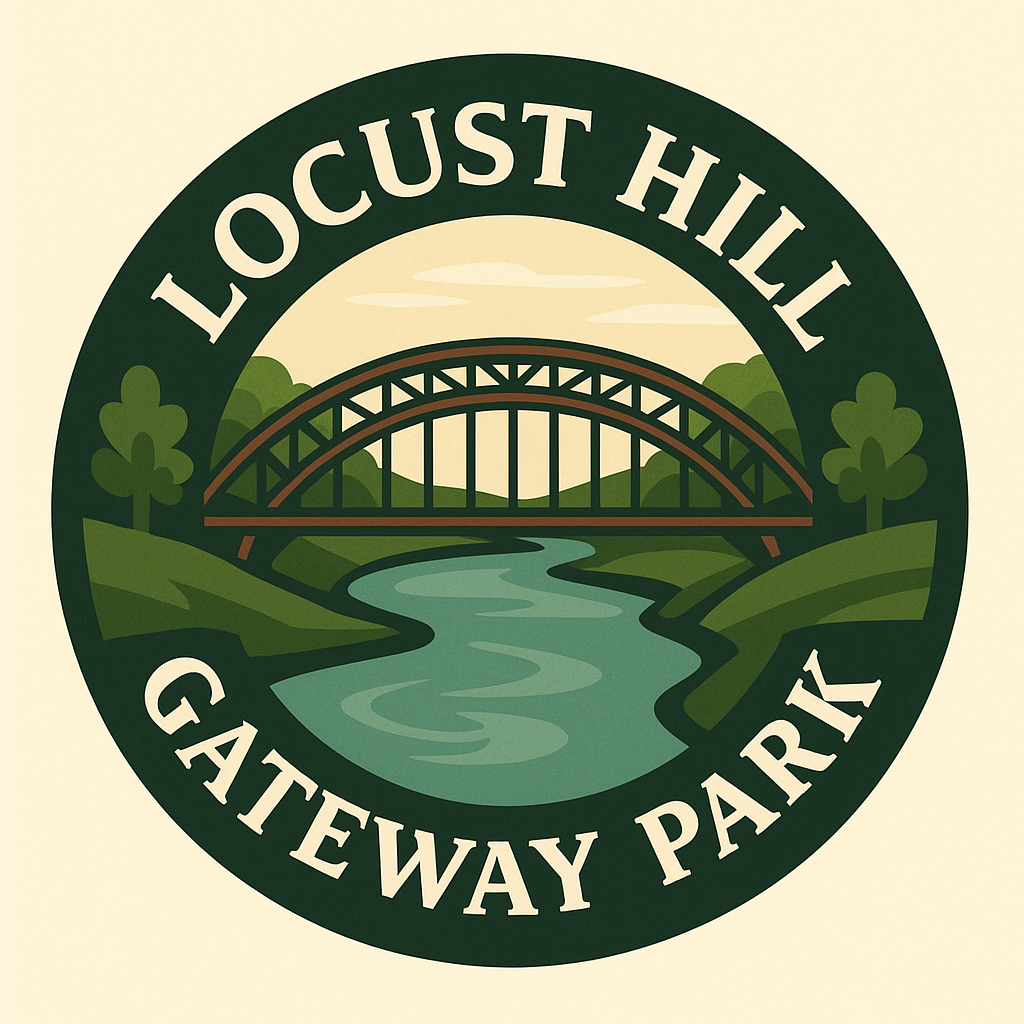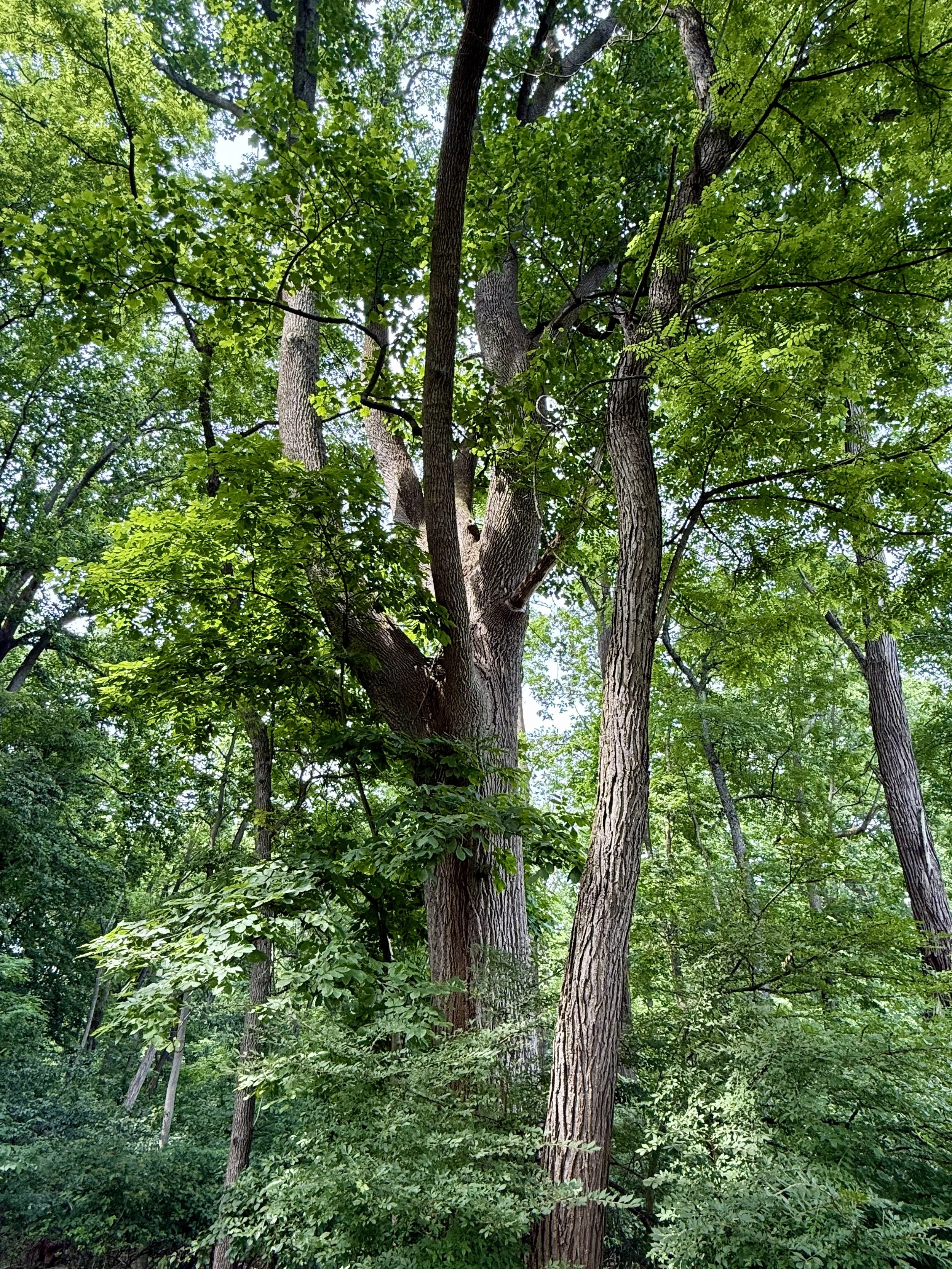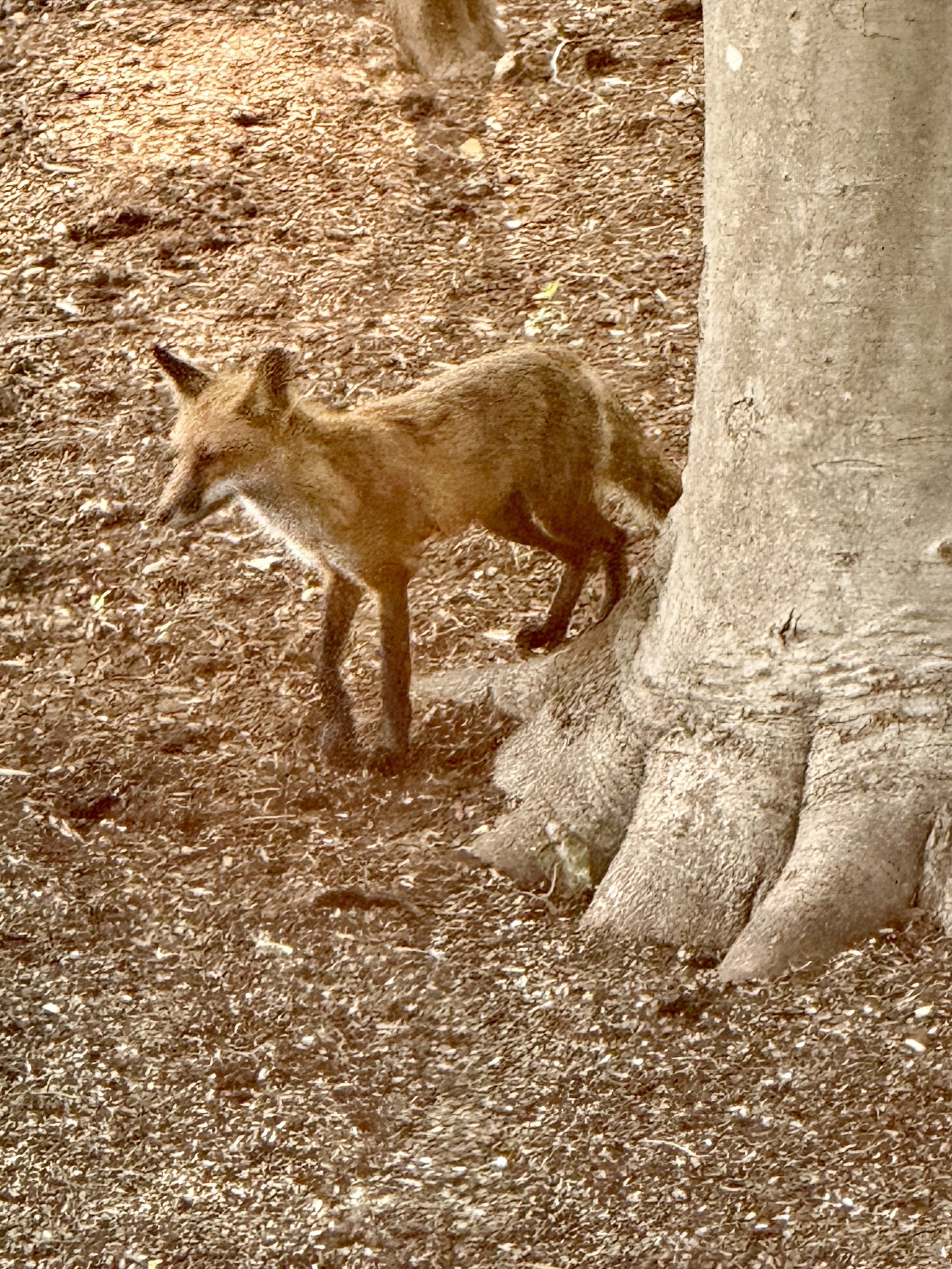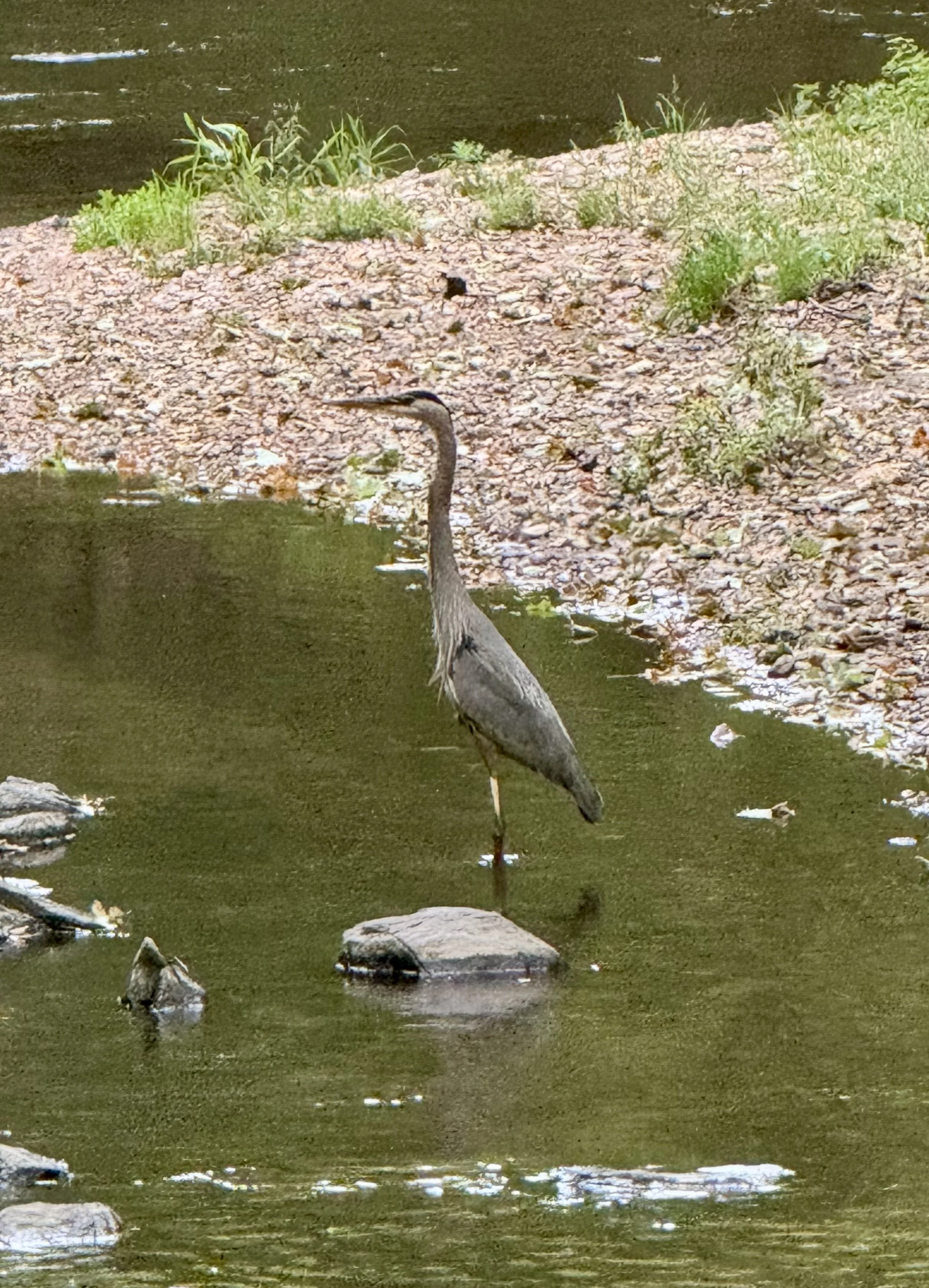Challenges to the Tree Canopy
at Locust Hill
Our proposed park is mostly covered in forest. The flatter areas were farmed as open fields and pasture during the 18th and 19th century. We still find some fence posts and wire on the field boundaries. Typical succession for the Mid-Atlantic Piedmont runs from wind-blown full sun plants such as goldenrod and grasses all the way, after many years, to shade tolerant oak, hickory and beech. The American Chestnut used to be part of the climax forest. There is a distinction here between wind blown full sun, plants and shade tolerant plants. The seeds of the former are spread by the wind and prefer to sprout out in the open. The seeds of the latter are more often carried by birds, dear and squirrel to sites growing in the shade of earlier succession plants. As the earlier plants age and die, the shade tolerant plants get their opportunity and become the next dominant population..
Our particular patch of the Piedmont shows two different successional histories. Flatter areas that were once fields have a more recent history because the fields were farmed into the early 20th Century. Here we have dense groves of tulip, ash, tupelo, a few black cherries and black locusts. On the rocky hillsides and field edges where farming was impractical grow climax trees such as red oak, white oak, hickory and beech. This succession group is older because even as the flat areas were farmed, the slopes and edges were left alone.
If the beech leaf nematode wipes out the beech trees and oak wilt wipes out the red oak group and emerald ash borer wipes out the ash we will be beyond the traditional succession model, possibly ready to start again with wind blown seeds.




